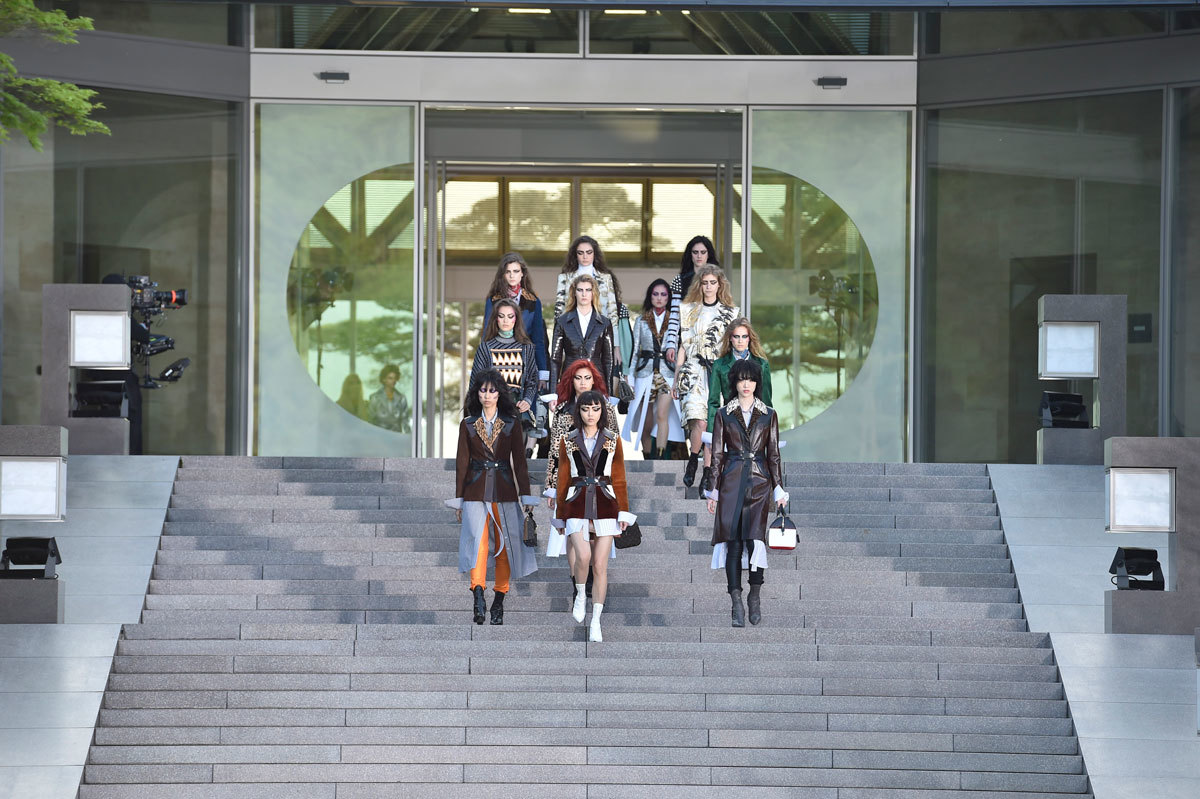There may be ballistic North Korean missiles flying around the Japanese sea this week, but on land the empire’s had more unusual intruders to deal with. In what he called the last chapter in a “trilogy” of cruise shows, which visited Rio last year and Palm Springs the year before, Nicolas Ghesquière took his Louis Vuitton show to Kyoto on Sunday evening in his grandest outing to date. Back in March, the designer had guests entering his Louvre fall/winter 18 venue through I.M. Pei’s pyramid in Paris—last night, across the globe, we took the long trek through a mountain tunnel, which finally revealed Pei’s Miho Museum on the other side in all its rocky modernism.
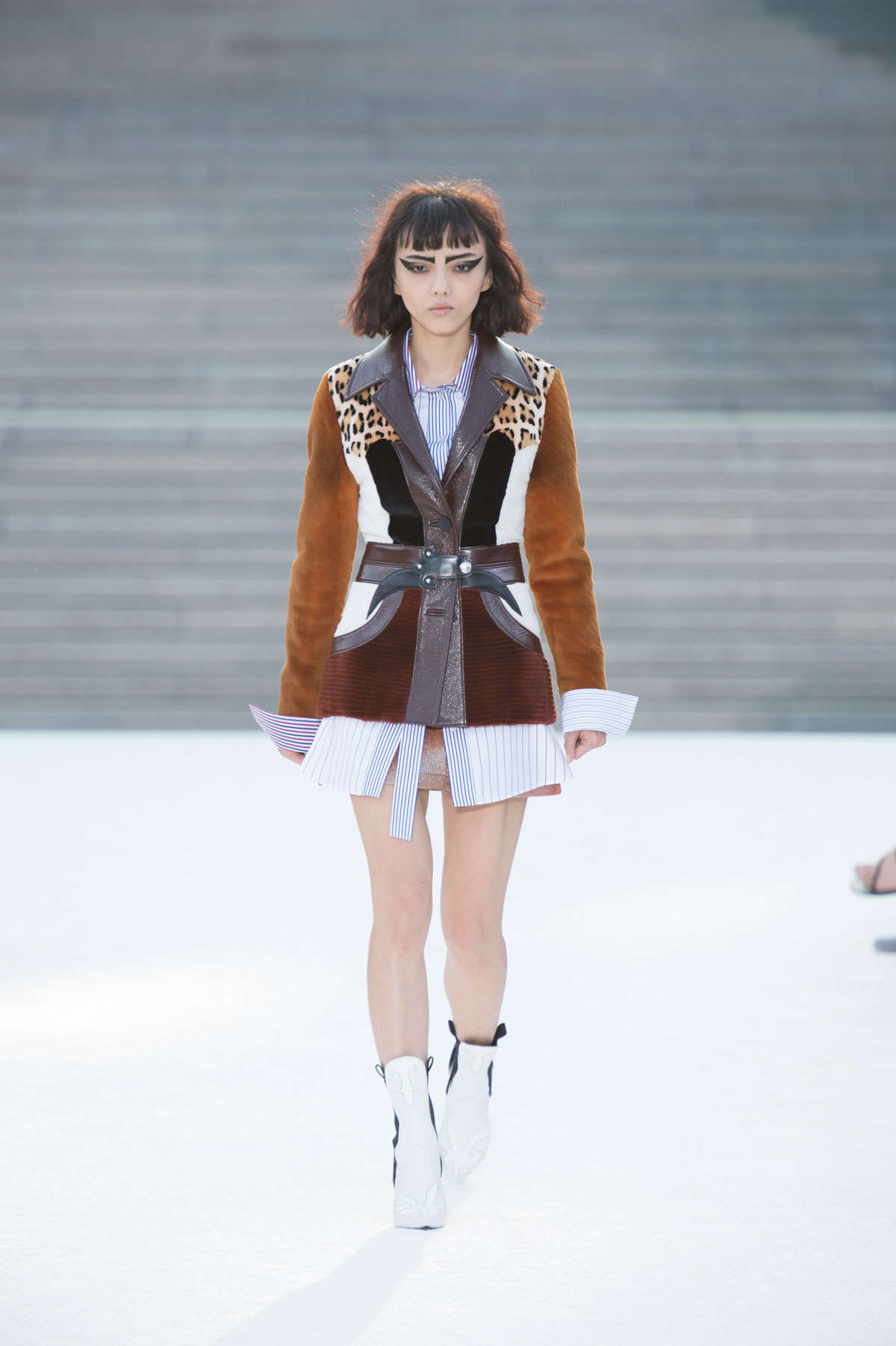
Ghesquière first came here with Japanese footballer Hidetoshi Nakata some five years ago, he recalled after the show, “and we saw this extraordinary place, like a sanctuary.” Miles away from the city of Kyoto itself, in the middle of nowhere high above forest-clad valleys, Pei’s museum sits atop a rock like some modern-day Neuschwanstein. It certainly has the same aura of isolated dream world about it, and it was here Ghesquière realized his perfect Japanese fantasy.
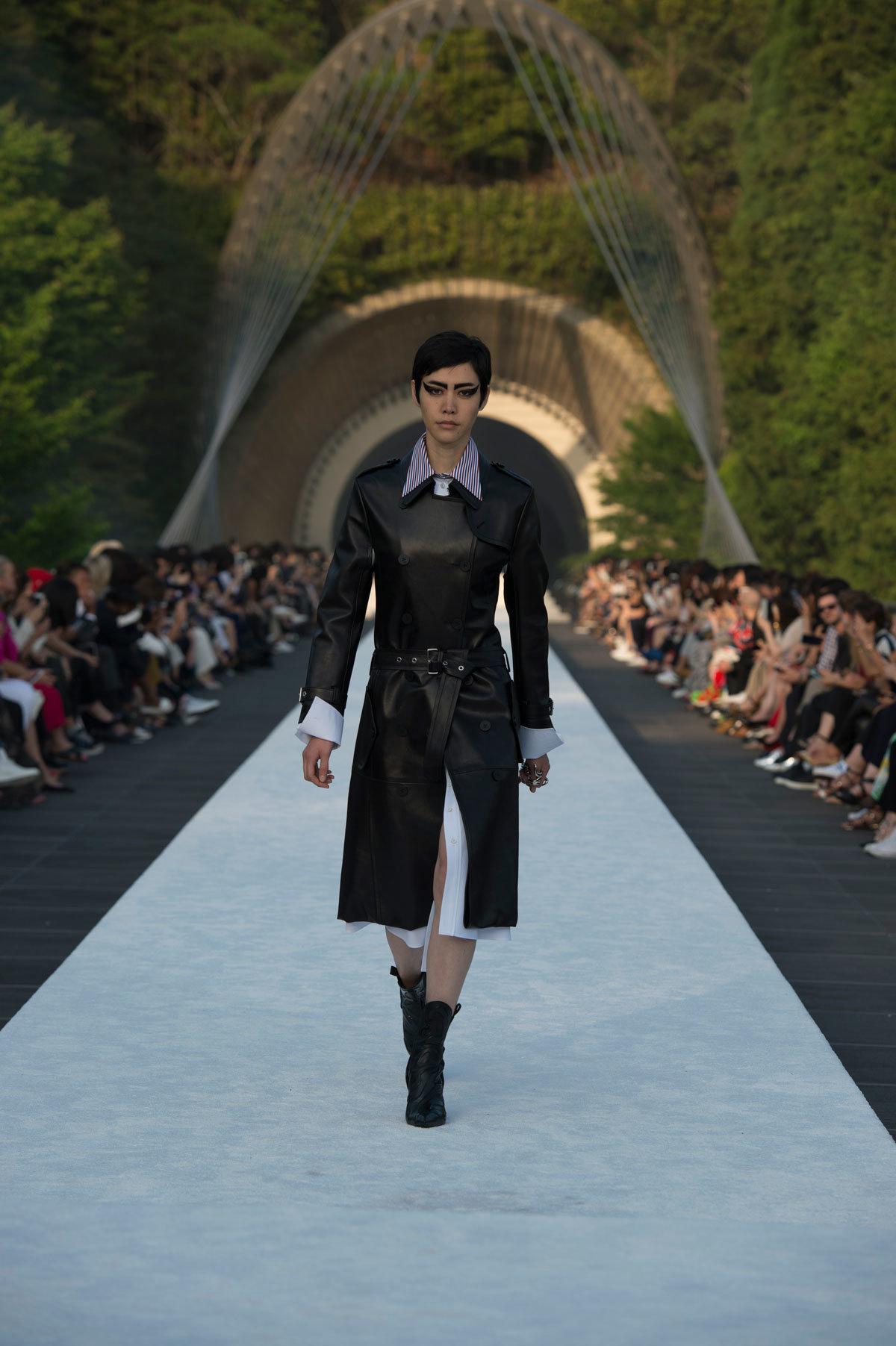
“Every cruise collection is about discovery—a game of integrating the culture of the country we are visiting with a point of view that’s very French and Parisian,” Ghesquière established backstage. “I have been coming to Japan for more than 20 years, and as everyone I was always amazed by the contrast between how they conserve the patrimony and the history and celebrate it, and at the same time, how much this country’s looking forward and is technological and modern.”

Those words could have been the foundation for any of Ghesquière’s collections: the fusion of high-tech futurism and something so grounded it feels ultimately tribal. Come to think of it, his fashion has a lot in common with Pei’s architecture: ancient futurism, if you will. Ghesquière applied his formula to Japanese tradition, opening the show with a series of great jackets – as is his forte – that patch-worked the trademarks of Japanese costume in multi-textured patterns. They made their way down the epic catwalk, through the mountain and over the dam-like bridge to the museum itself, a march of the samurai—an image Ghesquière cemented in the braided leather armor tops, which made a Shogun-esque cameo mid-show.

He called it “urban”, and it wouldn’t have looked wrong on Scarlett Johansson in Ghost in the Shell. “It’s my memories of Japan, coming to Kyoto discovering those incredible fabrics and crafts. We transform that fabric into the suit and the dresses you saw today,” Ghesquière explained, minutes after his photo call with Michelle Williams and Riley Keough on the Miho balcony. “I saw this movie a few years ago called Stray Cat Rock, which is about women bikers in the 70s in Tokyo, and the last time I came here they were still there – they were still around with those bikes – and I ended up being completely surprised by these characters so they were the women at the beginning of the show.”
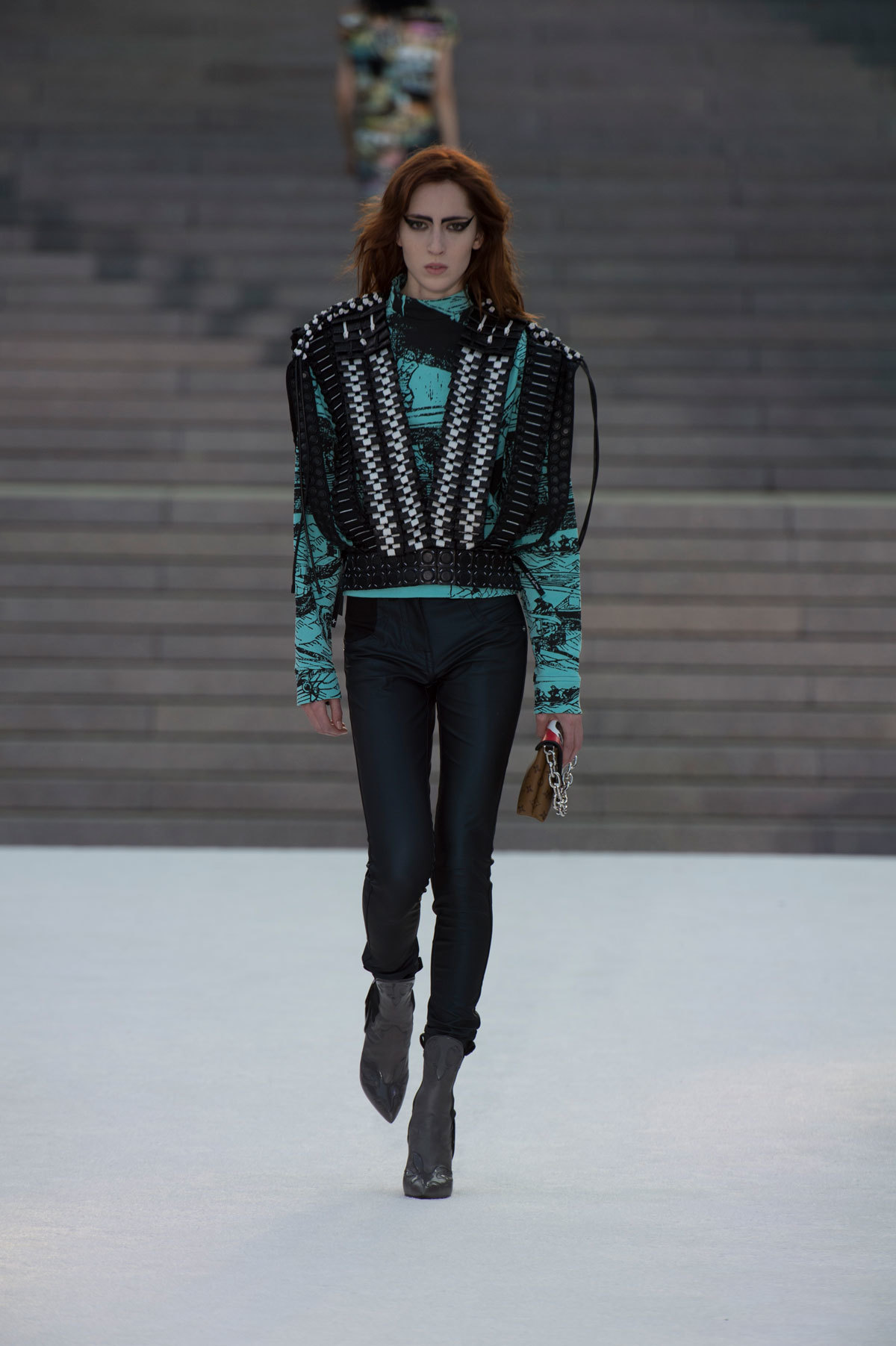
The reference generated a dystopian sensibility enforced by the models’ grittified geisha make-up and the collection’s combat undercurrent, like those tattered-looking lace dresses worn over shiny trousers and garments featuring motifs by the legendary Japanese designer Kansai Yamamoto, who also attended the show. If the whole experience had a whiff of urban warrior to it, let that be a lesson to those missile-loving North Koreans not to mess with the samurai.

“I think there is a certain idea of wearing clothes that come from urban-ness, It’s not about the street, it’s about the way women live and women are, and it’s true that most of the time this is reflected stronger in the cities, so it’s a way saying that,” Ghesquière said. “I wanted to have a joyful point of view of Japan and Kansai Yamamoto did this incredible costume for Bowie, as we know,” he continued, referring to the sculptural suit the designer made for the artist in the 70s, “and he was the first Japanese designer to show in Paris, so I thought it was really interesting to celebrate that and ask him to design a few things for the show. It’s really my own proper collage mixed with my urban Louis Vuitton silhouette that I have been developing for a few years now. The kabuki, the Noh Theatre, the samurai—all those symbols that we all know from Japan, which are so extraordinary. It was a pleasure to try to integrate them into that wardrobe.” The cruise show circus may look madly extravagant to fashion’s spectators, but much like Dior’s Maria Grazia Chiuri did it last week in California, Ghesquière executes the message of this show format to perfection: cruise collections were always rooted in traveling and traveling was always about cultural enlightenment.
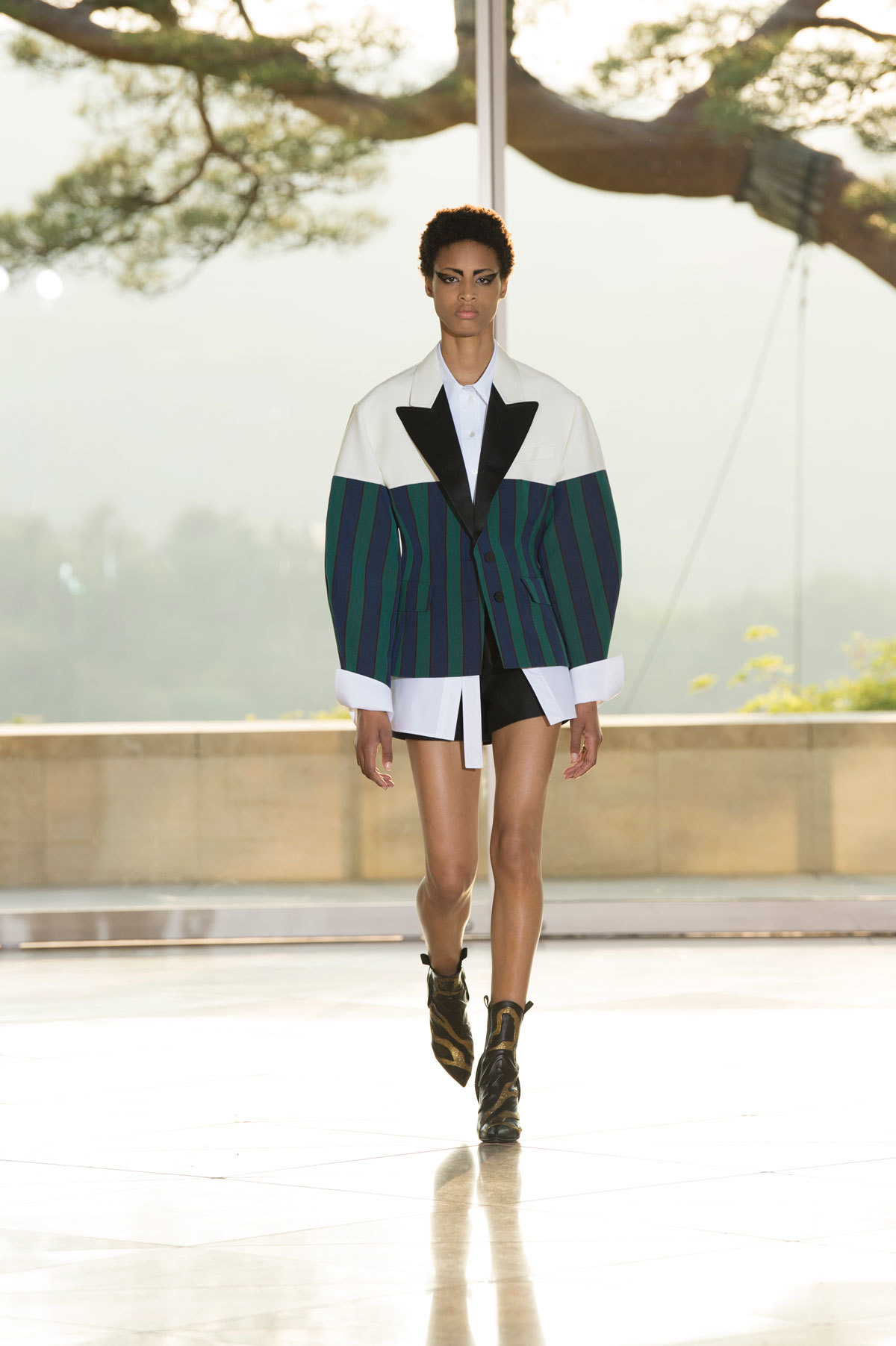
Credits
Text Anders Christian Madsen
Photography courtesy Louis Vuitton
